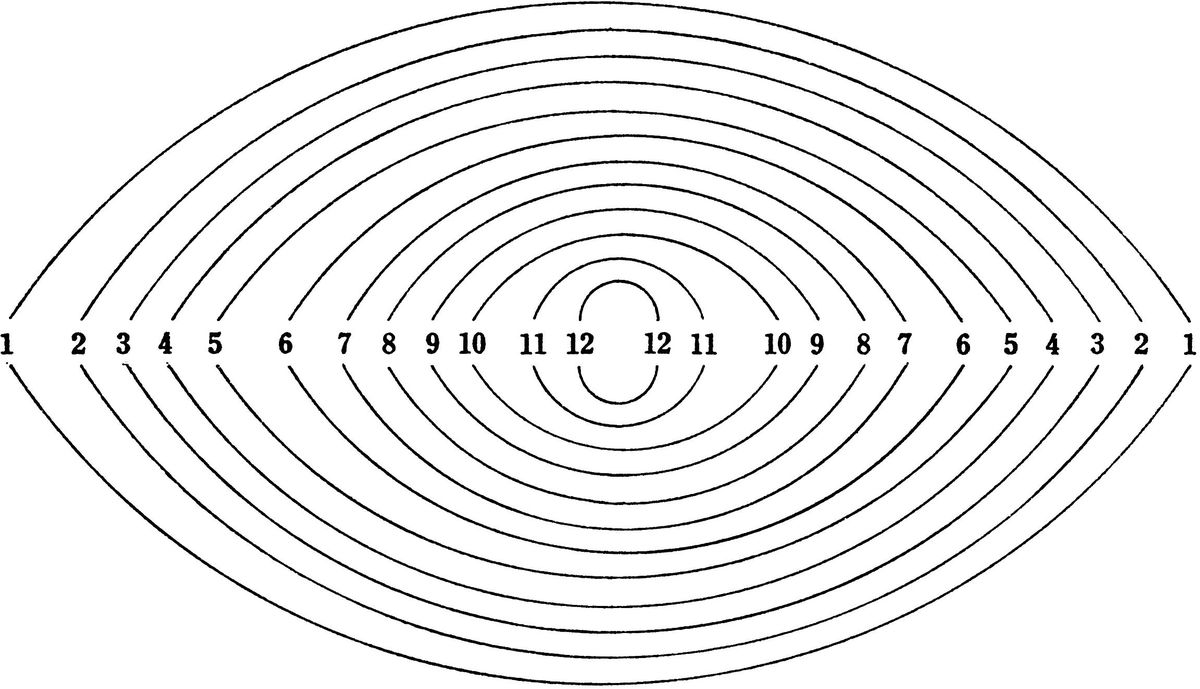Composition with Twelve Tones:
Chapter 7
It has been mentioned that the basic set is used in mirror forms.
Example 4:

From the basic set, three additional sets are automatically derived: 1) the inversion; 2) the retrograde; and 3) the retrograde inversion. The employment of these mirror forms corresponds to the principle of the absolute and unitary perception of musical space. The set of Example 4 is taken from the Wind Quintet, Op. 26, one of my first compositions in this style.
Later, especially in larger works, I changed my original idea, if necessary, to fit the following conditions: the inversion a fifth below of the first six tones, the antecedent, should not produce a repetition of one of these six tones, but should bring forth the hitherto unused six tones of the chromatic scale. Thus, the consequent of the basic set, the tones 7 to 12, comprises the tones of this inversion, but, of course, in a different order.
In Example 5, the inversion a fifth below does not yet fulfill this condition. Here the antecedent of the BS plus that of the INV 5 consists of only 10 different tones, because c and b appear twice, while f and f # are missing.(BS means Basic Set; INV means inversion of the Basic Set; INV8, INV5, INV3, INV6 means inversion at the 8ve, 5th, minor 3rd, or major 6th from the beginning tone.)














